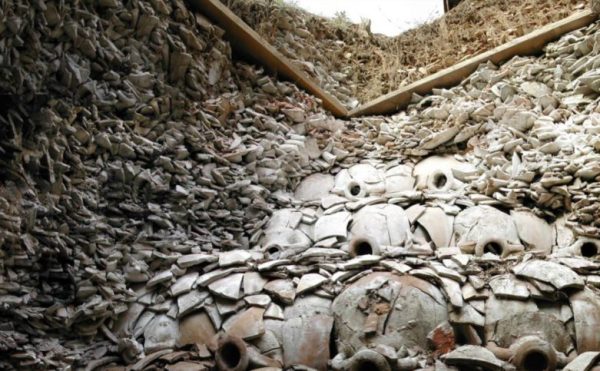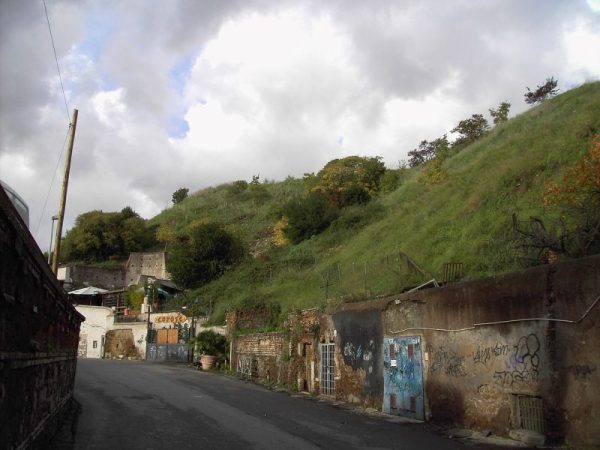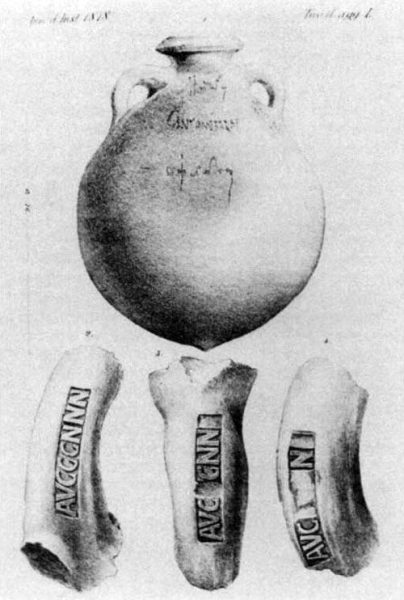
Nestled in the heart of Rome lies a fascinating archaeological wonder that has puzzled historians and archaeologists for centuries – Monte Testaccio. This peculiar mound, covering about 220,000 square feet, stands as a testament to ancient Roman ingenuity and leaves us questioning its purpose to this day. Comprising an astonishing 53 million shattered olive oil jars, known as amphorae, Monte Testaccio is a striking reminder of Rome’s rich maritime trade and culinary heritage.
Unveiling the Origins
Monte Testaccio’s origins trace back to the zenith of the Roman Empire, with excavations suggesting its creation as early as 140 A.D. However, recent discoveries hint at the possibility of an even earlier inception. Archaeologists speculate that this monumental mound served as a testament to Rome’s flourishing trade network, with olive oil being a staple commodity of the era.
The Enigmatic Design
The mound’s structure is a marvel in itself, featuring a triangular shape with terraced levels rising gradually towards the east.

These terraces, crafted from meticulously arranged pottery shards, provided pathways for the deposition of additional layers of amphorae, contributing to the mound’s towering height. Most of the shards belong to the Dressel 20 variety, originating from Baetica, Spain, while remnants from Tripolitania (Libya) and Byzacena (Tunisia) have also been unearthed.
Unraveling the Mystery
Despite extensive research and analysis, the true purpose behind Monte Testaccio remains shrouded in mystery. While it’s evident that the mound served as a repository for discarded olive oil amphorae, the absence of other types of shipping containers raises intriguing questions. Why were only olive oil jars deposited in such vast quantities?

Was Monte Testaccio a symbolic tribute to Rome’s dominance in olive oil production, or did it hold a deeper significance lost to the annals of time?
A Window into Ancient Trade
Monte Testaccio offers a unique glimpse into the economic prowess of ancient Rome and its reliance on maritime trade routes. The sheer volume of discarded amphorae underscores the magnitude of Rome’s consumption and distribution of olive oil, a vital commodity essential to daily life. Furthermore, the diverse origins of the pottery shards reflect Rome’s extensive trade networks, linking distant regions through commerce and cultural exchange.
The Legacy of Monte Testaccio
As excavations continue to unveil new insights, Monte Testaccio stands as a testament to the enduring legacy of ancient Rome.

Beyond its enigmatic origins, the mound serves as a poignant reminder of Rome’s vibrant commercial hub and its lasting impact on Mediterranean trade. By preserving and studying artifacts from Monte Testaccio, archaeologists hope to unravel the complexities of ancient economies and shed light on the daily lives of Roman citizens.
Conclusion
Monte Testaccio stands as a testament to the ingenuity and economic prowess of ancient Rome.

This monumental mound, crafted from millions of discarded olive oil jars, serves as a captivating archaeological puzzle, inviting us to delve deeper into the mysteries of the past. As excavations progress and new discoveries emerge, Monte Testaccio continues to captivate our imagination, offering invaluable insights into the vibrant tapestry of Rome’s cultural and economic heritage.





